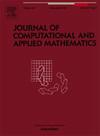首次失效渐进式截尾样本Cpy的经典和客观贝叶斯推断
IF 2.1
2区 数学
Q1 MATHEMATICS, APPLIED
Journal of Computational and Applied Mathematics
Pub Date : 2025-06-19
DOI:10.1016/j.cam.2025.116841
引用次数: 0
摘要
本文采用首次失效渐进式审查方案(FFPCS)来考虑过程能力指数(PCI)的估计。在FFPCS的基础上,利用最大似然(ML)、最大产品间距(MPS)和贝叶斯估计方法估计了逆Nakagami分布的Cpy。利用目标先验,在平方误差和线性指数损失函数下得到了Cpy的贝叶斯估计量。此外,利用两种经典方法获得了Cpy指数的近似置信区间(CIs),并与最高后验密度(HPD)可信区间进行比较。最后,进行了模拟研究,以评估基于均方误差(MSEs)和区间估计的Cpy点估计的有限样本性能,并比较了它们的平均长度和覆盖概率。为了证明所提出的指标和估计技术的有效性,对农机升降机的一个真实数据集进行了重新分析。本文章由计算机程序翻译,如有差异,请以英文原文为准。
Classical and objective Bayesian inference of Cpy for first-failure progressively censored samples
This article takes into account the estimation of the process capability index (PCI), using first failure progressive censoring scheme (FFPCS). On the basis of FFPCS, is estimated for the inverse Nakagami distribution using maximum likelihood (ML), maximum product spacing (MPS) and Bayesian estimation methods. Bayes estimator of is obtained under squared error and linear exponential loss functions using objective prior. Besides, approximate confidence intervals (CIs) for the index using both classical methods are obtained and compared with the highest posterior density (HPD) credible intervals. Finally, a simulated study is performed to assess the finite sample performance of the proposed point estimates of based on mean squared errors (MSEs) and interval estimates are compared with their average length and coverage probabilities. In order to demonstrate the usefulness of the proposed index and estimation techniques, one real data set from the agricultural machine elevators is reanalyzed.
求助全文
通过发布文献求助,成功后即可免费获取论文全文。
去求助
来源期刊
CiteScore
5.40
自引率
4.20%
发文量
437
审稿时长
3.0 months
期刊介绍:
The Journal of Computational and Applied Mathematics publishes original papers of high scientific value in all areas of computational and applied mathematics. The main interest of the Journal is in papers that describe and analyze new computational techniques for solving scientific or engineering problems. Also the improved analysis, including the effectiveness and applicability, of existing methods and algorithms is of importance. The computational efficiency (e.g. the convergence, stability, accuracy, ...) should be proved and illustrated by nontrivial numerical examples. Papers describing only variants of existing methods, without adding significant new computational properties are not of interest.
The audience consists of: applied mathematicians, numerical analysts, computational scientists and engineers.

 求助内容:
求助内容: 应助结果提醒方式:
应助结果提醒方式:


